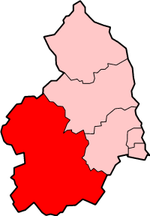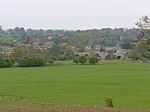Barrasford

Barrasford is a village in Northumberland, England. It is situated to the north of Hexham, on the North Tyne. Barrasford is an ancient village that lies within the shadow of Haughton Castle. The village is notable for being the location of a Bronze Age burial site where the Reaverhill Dagger was excavated in 1964. Today Barrasford is noted for its quarry. The scourge of tuberculosis lent urgency to the need for action in the North East. In 1902 a subscription fund was set up to finance the building of a sanatorium to treat patients. William Watson-Armstrong, who became Baron Armstrong after the death of his great uncle Lord Armstrong of Cragside, gave £4000 – equivalent to £350,000 today. The Newcastle upon Tyne and Northumberland sanatorium opened in 1907 on the moors above the neighbouring villages of Barrasford and Gunnerton. It treated victims of tuberculosis at a time when 60,000 people a year were dying from the disease in England and Wales, and the annual mortality rate in Newcastle alone was nearly 600. In 1974 Barrasford was the setting for the "Affairs and Relations" episode of Whatever Happened to the Likely Lads?.
Excerpt from the Wikipedia article Barrasford (License: CC BY-SA 3.0, Authors, Images).Barrasford
Woodbine Ter,
Geographical coordinates (GPS) Address Nearby Places Show on map
Geographical coordinates (GPS)
| Latitude | Longitude |
|---|---|
| N 55.055 ° | E -2.134 ° |
Address
The VIllage Shop
Woodbine Ter
NE48 4AA
England, United Kingdom
Open on Google Maps










